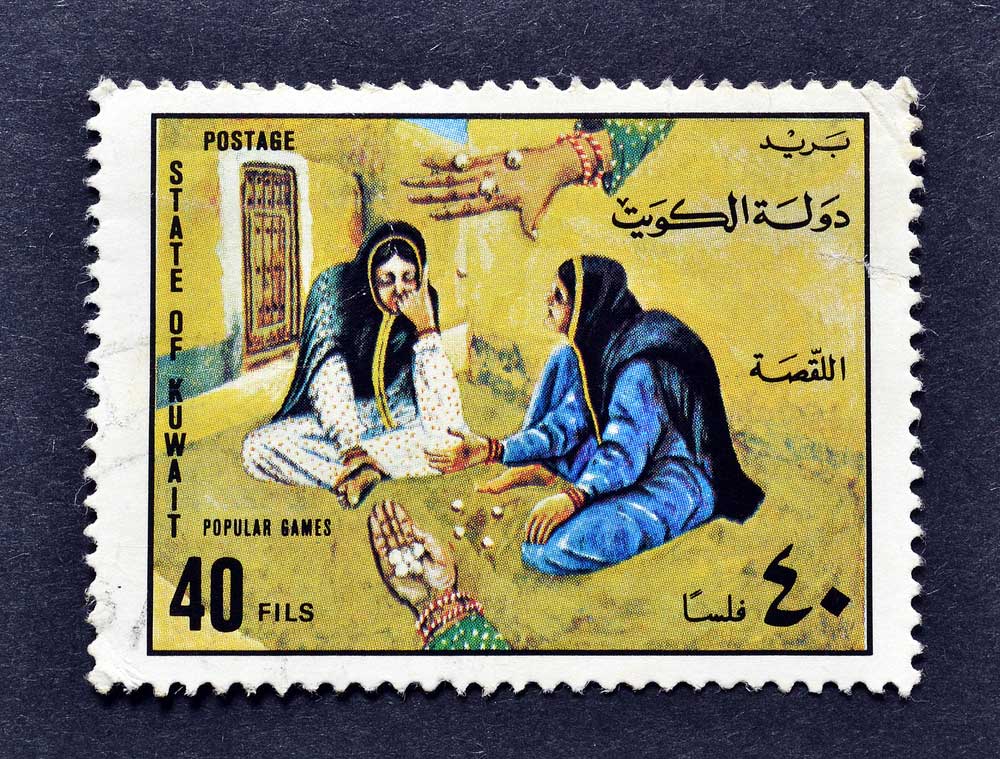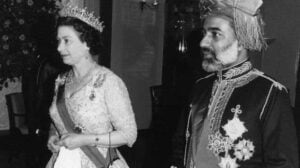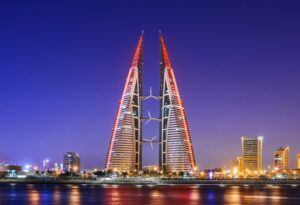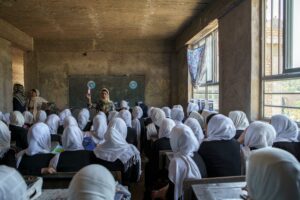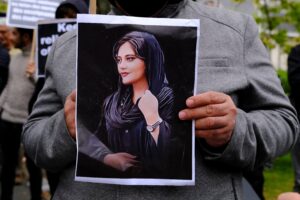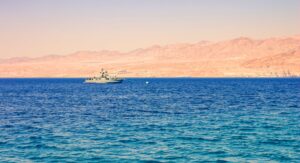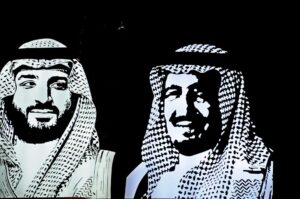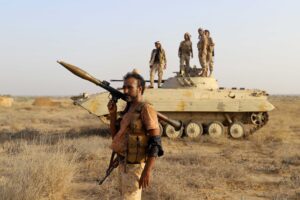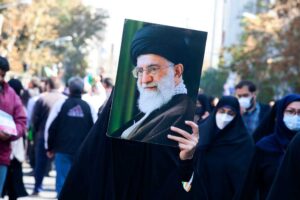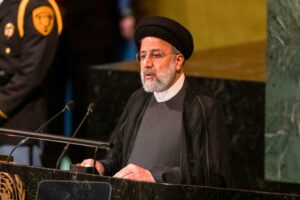This article is part of a multi-part series on Arab Gulf security.
In 1961, Kuwait emerged as an independent state from a historical gauntlet of threats and challenges. Viewed in retrospect, it was a surprising, if not astonishing, achievement. As for the Al Sabah, they had tethered their dynastic ambitions to the sheikhdom’s identity to such a degree that the two were, for all intents and purposes, inseparable. Through a combination of skill, opportunism, and good fortune, the Al Sabah managed relationships with far more powerful political entities – the Ottomans, the Persians, the Iraqis, the British, and rival emirates (the Bani Khalid, the Al Rashid, and the Al Saud) to maintain Kuwait’s independence. They also overcame social, economic, and sectarian centrifugal forces and sustained their role as the preferred – or alternatively the least objectionable – focal point for Kuwaiti identity and political authority. There was, and continues to be, no obvious viable alternative to the Al Sabah. Whether Bedouins, the Shi’a, monarchists, Arab nationalists, rich merchants, or Bidoon (and the list could go on), none of the groups trust the other – either singly or in combination – to rule, or even make an attempt to rule, balancing the interests of Kuwaiti society as the whole. Thus, the primary question in 1962, the year of the new constitution, was: ‘How would the Al Sabah and Kuwait fare in an increasingly complex domestic, regional, and global environment?’ Central to this question was the actual role of the Majlis and its ability to function.
Only the Al Sabah’s dynastic self-interest has incorporated an inclusive political, social, and economic vision.
Since independence, the idea that Western-style political institutions could provide ‘balance’ to Kuwait politics and society has waxed and waned. The concept of an independent legislative body with real power is simply foreign to the political, economic, and socio-cultural experience of the region, and Kuwait is no exception. Political power in the Middle East, whether gained through revolution or a ballot box, is to be wielded for narrow group self-interest – it is a zero-sum game. In the case of Kuwait, only the Al Sabah’s dynastic self-interest has incorporated an inclusive political, social, and economic vision. It’s hardly perfect, but the Al Sabah are more interested in getting political ‘buy-in’ from the broadest spectrum of society than in promoting a narrow ideological or social grouping over everyone else. In other words, it is in dynastic self-interest, and therefore the narrow self-interest of the Al Sabah, to promote the interests of a broader spectrum of the society in a broader based more tolerant society. The Muslim Brotherhood is not going to promote secularism and women’s rights, the Shi’a are not going to trust the salafi Sunni groupings and vice versa, etc. This situation makes any one or even combination of these groups unpalatable to the other. The Al Sabah represent the only center of political power that is willing to take into consideration the interests of each; that is how they have maintained their political power and why the Al Sabah and Kuwaiti identity are virtually one in the same. That is not to say that Al Sabah rule does not have its problems, but the Al Sabah represent the only identifiable alternative to splintered society, loss of state identity, and potentially a loss of independence. This is the principal driving reality that created the eighteenth century sheikhdom that eventually produced the twentieth century state. This Part II narrative assesses Kuwait from 1961 to the present through this political, economic, and social aperture as a means of assessing contemporary Kuwait.
Kuwait and Arab Nationalism 1962 to 1979
Between 1956 and 1961, the height of Nasserist Arab nationalism, the Al Sabah and Kuwaiti society, the revolutionary appeal of the secular pan-Arab message and particularly its promise of restoring Arab dignity and power buffeted Kuwait. The focal point of much of this rhetoric was the fate of Palestinians, and the rise of Zionism and Israel. In Kuwait, as in much of the Gulf, Egyptians and Palestinians often provided the professional expertise in education and infrastructure that was modernizing the state; thus, Arab nationalist ideas took root. Prior to 1961, the British presence served to buffer Kuwait in terms of politics and security, but with independence in 1961, followed by the new constitution in 1962 with its National Assembly (Majlis), the internal dynamics for the Al Sabah changed. In one sense, it was the same balancing act that the Al Sabah had mastered over the past 200 years, but the balancing act now had a new more virulent ideological component. At a basic level, the issues were the same – political power and economic influence – now they were wrapped in a new ideological cloak and had to be addressed in a similar fashion.
In 1965, Sheikh Abdullah died and Emir Sabah al-Salim al-Mubarak Al Sabah (r. 1965–1977) became ruler. Oil wealth had brought new frictions exacerbated by economic imbalances that stemmed in large part from excessive foreign investment with little focus on domestic development.[i] Among some groups there were growing complaints of Majlis vote rigging by the ruling family. These domestic issues were complicated by broader regional unrest. The so-called Arab Cold War 1958–1967 between Egypt and Iraq for leadership of the Arab nationalist movement formed the backdrop for the collapse of the United Arab Republic (the Egyptian-Syrian Union) in 1961, Qasim’s fall in Iraq 1963 followed later by the rise of the Ba’ath Party in both Syria and Iraq, the Yemen Civil War 1962–1969, and finally, the fallout from the Arab disaster in the 1967 Arab-Israeli War.[ii] Paradoxically, these crises buoyed the fortunes of the Al Sabah because the “revolutionary” Arab states and groups – Egypt, Syria, Iraq, and the Palestinians – found themselves in desperate need of financial assistance. The 1973 October Arab-Israeli War brought a huge spike in oil prices. The Kuwaitis became fabulously wealthy, and they used that wealth to insulate themselves from domestic and external challenges and threats. The Kuwaiti government and private individuals gave generously to confrontation states and Palestinian organizations. The institution of a ‘welfare state’ also enabled the Al Sabah to stifle any significant domestic political opposition. In 1976, this allowed the Al Sabah to stifle political agitation by dissolving the Majlis for the next five years, curtailing freedoms, and ruling without interference. By the time of Sheikh Sabah’s death in 1977 and the ascension of Sheikh Jabir al-Ahmad al-Jabir Al Sabah (r. 1977–2006) as emir, the Al Sabah and its supporters believed that they had come up with a new balancing formula that would allow them to independently manage the threats of the future – namely by buying security from those that might threaten them and suppressing what limited internal opposition existed. They also believed that they could chart a course independent from that of their Western backers. To that end, the Al Sabah recognized the Soviet Union, supported radical causes, and opposed Western policies to demonstrate their independence.[iii] This strategy was understandable but much higher risk than the Al Sabah anticipated – they forgot how dangerous the Middle East can be for a small, wealthy state.
Lessons in Small State Survival–1979 to 2006
Across the Greater Middle East, 1979 was a pivotal year. Regarding Kuwaiti security, the Al Sabah balancing act became increasingly complicated. The Iranian Revolution and the rise of the Ayatollah Khomeini introduced a new revolutionary Islamist ideology that specifically argued that kingship was pagan and had no place in an Islamic society, a clear threat to the Al Sabah.[iv] Almost simultaneously, Saddam Hussein took dictatorial control in Iraq. The Iran-Iraq War (1980–1988) quickly followed, placing Kuwait literally in the middle of conflict where both combatants were a potential threat to the Al Sabah and Kuwait. When the Iranian Revolution elevated sectarian tensions in the election of 1981, the Al Sabah concluded that Iran was the more immediate problem. The domestic sectarian turmoil was further complicated by a dramatic drop in the price of oil undermining the financial fundamentals of Kuwaiti policy. In addition, the Suq al-Manakh affair, a private speculative stock market, collapsed and implicated Al Sabah in criminal activity. To complicate matters further, Kuwait, as a member of the newly created Gulf Cooperation Council (GCC), supported Iraq in its war with Iran, making Kuwait a de facto belligerent.
Oil wealth had brought new frictions exacerbated by economic imbalances that stemmed in large part from excessive foreign investment with little focus on domestic development.
In 1983, Kuwait experienced the direct effects of the war. Radicalized elements in the Shi’a population supported by Iran attacked US and French targets in Kuwait. In the Gulf, Iranian naval and air forces targeted Kuwaiti tankers, forcing the US to come up with a scheme for “flagging” Kuwaiti tankers to afford them US Navy protection.[v] In 1985 and 1986, there was not only an attempt to assassinate the emir, but also bombings at oil installations. The National Assembly reacted by blaming the government and creating more political turmoil. To reestablish control, Emir Jaber dissolved the assembly, suspended the constitution, cracked down on the press, and suppressed some opposition groups. With Western backing, the Al Sabah weathered the crisis with their authority intact. In 1988, the end of the war was a relief, but depressed oil prices and huge outstanding loans to Iraq left Kuwait with nothing to show for their efforts. To increase revenues, Kuwait upped its oil production which further depressed the price and called for Iraq to repay the loans. This situation sparked a confrontation. By the summer 1990, Saddam Hussein demanded that Kuwait curtail its oil production, forgive Iraq’s war loans, and cede control of several strategic islands in the Gulf. Emir Jaber refused, assuming that the demands were bluster. Even with Iraq troops on the border, the Kuwaitis assumed that their wealth and their negotiating skills would protect them. As one senior Arab Gulf military officer put it, “The Kuwaitis had always been able to outmaneuver their opponents—hubris blinded them to the threat.”[vi] In August 1990, the Iraqis invaded, occupied, and sacked Kuwait. The Al Sabah were ultimately restored by a US-led coalition.
The aftermath of the war proved challenging. Prior to the war, there was increased opposition pressure on the Al Sabah for reforms and increased political participation. During the war to gain political support, Sheikh Jabir reluctantly promised political liberalization to increase support for the Al Sabah.[vii] In theory, the US supported liberalization. With the Iraqi threat removed, the Emir attempted to ignore his promise until the liberalization policies received an unexpected boost. The lack of democratic ‘progress’ in Kuwait had become an issue in the US election of 1992, and US lawmakers raised questions about defending an “undemocratic” regime.[viii] In 1992, under domestic and US pressure, Sheikh Jabir called for elections and a National Assembly dominated by the opposition came to power. Various stripes of Islamists obtained strong representation. The opposition attempted to undermine the Emir’s power and the Al Sabah campaign to neutralize the opposition resulted in a decade of political turmoil. Nevertheless, the real power remained in the hands of the ruling family and their supporters. This was the situation in 2003 when the US invasion of Iraq destabilized this fragile political equilibrium in Kuwait.
It was unthinkable that Washington was clueless and thus the Al Sabah threw their support behind Operation Iraqi Freedom.
Supporting the US after 9/11 against Al Qaeda was one thing but, in 2003, the invasion of Iraq was far more controversial. Kuwait’s survival depended on US security guarantees. Emir Jabir trusted that the George W. Bush administration – on the issue of weapons of mass destruction – knew what they were talking about. In addition, the Emir could not conceive that the US had no real plan for Iraq after the elimination of the Saddamist regime, or that it would in effect install a Shi’a regime in Baghdad. It was unthinkable that Washington was clueless and thus the Al Sabah threw their support behind Operation Iraqi Freedom. Some speculated that the decision was driven by fear of an internal salafi threat.[ix] The US also rewarded Kuwaiti support by designating Kuwait a Major Non-NATO Ally (MNNA) providing for significant US support in the event of a crisis.[x] It is far more likely that with the memory of 1990—1991 still fresh, the Kuwaiti government viewed the US alliance as an existential requirement that come-what-may had to be maintained. Existential or not, the decision created “unprecedented levels of resentment” across Kuwaiti society and fueled the radicalization of multiple Islamist groups. Underemployed young Kuwaitis were inflamed by the carnage in Iraq and the carte blanche that the Bush administration appeared to give Israel in crushing the Palestinian intifadas. There were direct security consequences for Kuwait and the Al Sabah. As Michael Knights put it, “Since the beginning of the military buildup in autumn 2002, Kuwait’s involvement with the US military presence in Iraq has been the primary driver of insurgent activity originating with Kuwait.” Cells in Kuwait facilitated the movement of insurgents and funding to support the Iraqi resistance. In 2005, Kuwaiti security discovered who intended to attack US and foreign targets, and by 2006–2007, the threat of Iraq’s chaos spreading into Kuwait was real. Despite deepening concerns, Kuwait or the Al Sabah had few options. Political paralysis and pessimism increased dramatically. Regardless, it was the Al Sabah who remained the only constant in the political fabric of the state.
The Al Sabah and the National Assembly 2006 to the Present
In 2006, Sheikh Jabir died and the Crown Prince, Sheikh Sa’ad Abdullah Al Sabah lacked the competency to rule. As a result, Sheikh Sabah al-Ahmad al-Jabir Al Sabah (r. 2006–2020) became Emir.[xi] Emir Sabah has faced unrelenting political turmoil with multiple parliamentary elections and political frictions that have stymied development. The National Assembly repeatedly failed to effectively govern and increasingly became a source for instability and incompetence. In 2011, even royal rivals were accused of using parliamentary clients to undermine ministries and assail opponents, threatening to divide the ruling family.[xii] With foreign policy under the central government’s control, new more consistent, assertive policies emerged. For example, Kuwait provided warships to support the GCC intervention in Bahrain but refused to provide ground troops.[xiii] It supported GCC intervention in Libya and the Egyptian military coup that overthrew the Muslim Brotherhood government of Muhammad Morsi. In the dispute with Qatar, Kuwait wisely did not support the ill-fated embargo and was a beneficiary of increased trade with Doha.[xiv] In Yemen, Kuwait provided military support including limited ground troops to contain the Zaydi Houthi ambitions in part in retaliation for Iranian subversive efforts in Kuwait.[xv] In Syria, the Al Sabah’s position has been more nuanced. The Kuwaiti government has argued that the Assad regime fueled the growth of the Islamic State in Iraq and al-Sham (ISIS) and allowed its facilities to be used by Western forces operating against the Islamic State. At the same time, the Kuwaiti government has not officially supported Assad’s opponents while private Kuwaiti sources funded groups opposed to Assad. This private funding at times included Jabhat al-Nusra, an Al Qaeda affiliate, and others on Western terrorism lists. Official attempts to curb those contributions have been half-hearted.[xvi]
Between 2006 and 2012 nine Kuwaiti governments resigned and the Majlis was dissolved five times.
The internal political situation was further complicated by a controversial succession issue. In 2006, Sheikh Jabir died. The Crown Prince, Sheikh Sa’ad Abdullah Al Sabah, suffered from dementia and after intervention by the National Assembly was declared incompetent and replaced by Sheikh Sabah al-Ahmad al-Jabir Al Sabah (r. 2006–2020). Sheikh Sabah’s succession violated the normal rotation between the Jabir and Salim branches of the family. There was some controversy, but given the challenges facing the ruling family, the break with tradition was uncontested. From the beginning of his reign, Emir Sabah faced unrelenting political turmoil and in 2006 dissolved the Majlis. Since that time, despite Kuwait’s enormous financial resources, multiple parliamentary elections and political friction between the Al Sabah and the opposition stymied development and growth. In 2008, the Emir dissolved the Assembly again and had two of the deputies arrested on charges of being members of Kuwaiti Hezbollah.[xvii] Disputes within the Al Sabah family have resulted in judicial gag orders and sanctions against media outlets for airing the disputes. In 2011, following the Arab Spring, rival royals apparently used parliamentary clients to undermine ministries and pressure rivals, prompting speculation that using the democratic process and the Majlis in Al Sabah power struggles constituted a threat to the regime.[xviii] The political turmoil between 2006 and 2012 undermined the credibility of the democratic process in Kuwait. During that period nine Kuwaiti governments resigned and the Majlis was dissolved five times.[xix] The chronic paralysis was unrelenting. In 2016, the emir dissolved the Assembly again citing “circumstances [security] in the region.”[xx] Case-by-case finger pointing aside, the fact is that if the emir did not have the ability to act and govern without the Assembly; Kuwait would often have no government at all. The other Arab Gulf regimes use Kuwait as a negative object for those who agitate for “constitutional monarchy” in their own states. “Kuwait’s experiment with limited democracy has yielded little but frustration. Monarchical leaders in Saudi Arabia and the UAE, their cities gleaming and economies diversifying away from oil, see it as a model to be avoided.”[xxi]
In September 2020, Sheikh Jaber died, and there was hope that the new Emir, Nawaf al-Ahmad Al Sabah, would be afforded some political breathing space to create an “al-ahd al-jadeed” or a “new era.” Instead, the Majlis deadlocked almost “instantly” over various grievances, real and imagined; the government resigned, and the new Emir dissolved the Majlis.[xxii] This was the tenth time that an emir dissolved the Majlis since 1962 – quite a record of dysfunction. There are any number of articles and opinion pieces explaining the problems with the election process in which factionalization and personalization of Assembly elections were blamed for undermining the functioning of the Kuwaiti National Assembly. The ‘experts’ offer various opinions on fixes for it with the exception of speculating that the Kuwaiti body politic may not be capable of self-rule without that presence of an overarching authoritarian structure.[xxiii]
Ever mindful of its security requirements, the Al Sabah continue to host large numbers of US military personnel, extensive stores of prepositioned equipment, and large US military bases. This ensures the territorial integrity of the state and dissuades any that might be tempted to resort to force regarding the emirate. It also frees Kuwaiti security forces to focus on internal security and stability issues. In return, the US has helped to train and upgrade Kuwaiti armed forces and security services providing critical intelligence coordination. This has created a situation in which criticism of the US presence and support for the Al Sabah mirrors past criticisms of the British role in the sheikhdom. Mindful of this, the Al Sabah periodically take policy positions that demonstrate their independence but do not threaten the critically close security relationship. For example, Kuwait has consistently refused US entreaties to forgive Iraqi debts dating from the Iran-Iraq War. The former Foreign Minister Sheikh Mohammad al-Salim Al Sabah put it bluntly, “Iraq’s debt to Kuwait is an old debt … It has to be paid or Iraq has to pay its interest. These are the rights of the Kuwaiti people.”[xxiv] The Kuwaitis continue to refuse to forgive the debt of about $25 billion but have not aggressively pressed for payment. They intend to maintain whatever leverage they have for future dealings with Iraq.[xxv] The Al Sabah are mindful of what can happen to a small, wealthy state located on a highly strategic piece of ground in the Gulf.
Kuwait and the Future – The Balancing Act
Petroleum wealth aside, for 250 years the Al Sabah have faced seemingly insurmountable challenges – to reiterate, Kuwait’s survival has been a balancing act of extraordinary pragmatism and opportunism blessed with good luck. The propensity in the West, and to some degree in Kuwait itself, to view the current situation as particularly negative is likely an overreaction. A senior US official described the country as suffering from a “case of pessimism” about the future.[xxvi] There is more than a little truth to that statement, but this “pessimism” is more about expectations than reality. Having set the early standard among the Gulf emirates for development and growth, Kuwait is now being outstripped by its Gulf cousins to the south. Despite Kuwait’s wealth, the vibrancy of a Dubai or an Abu Dhabi seems to be lacking. Some argue that Kuwaiti optimism was crushed under the treads of Saddam’s tanks and severely shaken by the 2003 US invasion of Iraq. In general, Kuwaitis believe that nothing positive came from the invasion of Iraq. It created a hotbed of Islamic resentment toward the Al Sabah among the non-violent salafi opposition. It intensified the social and political divisions between the settled Bedouins and the largely pro-government urban population. It intensified political religious identity as opposed to secular and tribal ties. It created serious internal security problems among radicalized elements of youth. It destroyed the Sunni buffer that Saddamist Iraq provided against Iran, and it increased the power, prestige, and influence of Shi’a Iran throughout the Gulf. As one senior Gulf military official put it, “How could the United States have been so ignorant of the nature of Iraq and its role as a counterbalance to Iran?”[xxvii] Kuwait now takes a measured view of the advice from the US; well-meaning friends can be more dangerous than implacable enemies.
The Al Sabah have managed to survive. The challenge for the West is to come up with the best means of supporting that survival.
Even in “reform” and “democracy” obsessed Washington, the agitation for significant liberalization in Kuwait has all but disappeared. A more pragmatic view has taken hold, asking the question, is there any real alternative to the Al Sabah? The short answer is: ‘Not one palatable to the West.’ If the Al Sabah imploded, the most likely replacement would be an authoritarian regime dominated by salafi Islamists, and that regime would face the same threats to Kuwait security and independence. To take the view that significant political change is in the offering in Kuwait ignores 250 years of political give-and-take in which the Al Sabah have managed to survive. The challenge for the West is to come up with the best means of supporting that survival. Western officials familiar with the region may be frustrated with what they view as the stagnation of the state and the failure to address institutional reforms and improvements, but quite frankly, the premise that Western ‘experts’ understand the situation better than the Al Sabah is ludicrous. For better or worse, democracy, liberalization, and parliaments are not the formula for stability in the Middle East. To quote Sir Charles Johnston, former British Ambassador to Jordan in the chaos of the mid-1950s, “Monarchy is a very ancient and tenacious principle in the Arab world.”[xxviii] In the last half-century the traditional states of the region have been far more stable politically than any of the so-called democratic republics. That is the more realistic perspective from which to discuss Kuwait’s political future.
While anything can happen, it is hard to imagine Kuwait without the Al Sabah. Without the Al Sabah, Kuwait would likely be part of Iraq, Saudi Arabia, or Iran. The ruling family has a remarkable track record of reinventing itself as historical circumstances have required and is the only group in Kuwaiti politics and represented in the Majlis that could provide the leadership required by contemporary circumstances. In addition, is there any real alternative to the Kuwaiti-US security alliance? The short answer is: ‘No.’ This raises another question—what would Kuwait look like in the highly unlikely event that Al Sabah rule in Kuwait passed from the scene? The Al Sabah have balanced the interests of the royal family and the stability of the state against the narrower interests of political and sectarian groups. Left to its own devices, the majlis would be, at best, paralyzed and, at worst, a threat to the survival of the state. An authoritarian state would likely emerge and presumably be one controlled by a Sunni fundamentalist sectarian structure. It would very well set in motion a struggle for control in Kuwait that would involve Saudi Arabia, Iran, and Iraq, widening the instability of the region. Al Sabah rule has not been perfect, but it is far superior to that of any foreseeable alternative.
Given the dysfunctional majlis, undertaking fundamental and badly needed reforms in the educational system, infrastructure, healthcare, and other areas in partnership with them is difficult if not impossible. The coercive power of the state rests in the hands of the emir and the government, where real decisions are made. The emir’s constitutional right to dissolve the majlis provides the ruling family with the necessary leverage to maintain stability. The idea that the majlis, with its history of factionalism and sectarianism, could provide a stable base from which to rule Kuwait (or perhaps even maintain the cohesion of the state) is a socio-centric Western pipe dream. Political reform, i.e., Western concepts of democratization in Kuwait, are merely a formula for further turmoil. Kuwait is a traditional Gulf patronage state, and that top-down structure will almost certainly determine the path that modernization and development will take.
[i] J. B. Kelly, “The Economy of Kuwait,” Fighting Retreat from Arabia and the Gulf: The Collected Essays and Reviews of J. B. Kelly, Volume 1: 180–181.
[ii] Malcolm Kerr, The Arab Cold War, 1958–1967 (London: Oxford University Press, 1967) provides a concise overview of the “Cold War” that erupted between Egypt and Iraq following the Iraqi Revolution of 1958. As much a personal feud as an ideological one between Nasser and Qasim, the conflict lessened the political pressure on the Arab Gulf states as both sought allies, and it lessened the military pressure on Israel.
[iii] A senior Gulf Arab military officer labelled this period of appeasement and buying off of threats as “the Kuwait phase” of Arab Gulf development. He was comparing it to Qatar’s flirtations with Iran and the Muslim Brotherhood. It is an apt description of Kuwaiti policy of diplomatic and political maneuvering to buy off their domestic and external threats. Unfortunately, their lack of focus on an ally that could defend them proved problematic. It in fact reminds one of contemporary Arab leaders in the Gulf who seem to believe that relations with Russia or China as opposed to traditional relationships with the West can provide dynastic security – another type of “Kuwaiti phase.”
[iv] Abrahamian, Khomeinism, 21. Khomeini’s Najaf period seemed to have broadened the political scope of Khomeini’s interpretation of wilayat-e fiqh. Some have speculated that this was a result of the struggle within Iraq between the traditional Shi’a clergy and the communists, and Ba’athists were making serious gains among the educated Iraqi Shi’a, thus requiring a more aggressive theological approach in Iraq.
[v] A former US ambassador with direct knowledge of the genesis and operational aspects of the tanker flagging strategy.
[vi] A senior Gulf Arab military officer familiar with Kuwait and the Iraqi invasion of 1990. In fairness, the Kuwaitis were not the only ones surprised by the Iraqi invasion. The assessment among the Western allies, including the United States, was that in a worst case scenario, Iraq would occupy border areas and perhaps Bubiyan Island in the Gulf, but not until literally the last minute did anyone see the occupation of Kuwait as a likely outcome of Iraqi threats.
[vii] May Seikaly, “Kuwait and Bahrain: The Appeal of Globalization and Internal Constraints,” in Joseph A. Kechichian, ed., Iran, Iraq, and the Arab Gulf States (New York: St. Martin’s Press, 2001): 184–185.
[viii] Nathan J. Brown, “Kuwait Democracy Crisis,” Carnegie Endowment for International Peace (May 18, 2009): https://carnegieendowment.org/2009/05/18/kuwaiti-democracy-in-crisis-pub-23127.
[ix] Michael Knights, Troubled Waters: Future of US Military Assistance in the Persian Gulf (Washington, DC: The Washington Institute for Near East Policy, 2006): 39.
[x] “Kuwait: Governance, Security, and US Policy,” Congressional Research Service RS21513 (May 12, 2021): http://crsreports.congress.gov
[xi] This situation created a minor controversy because the Sheikh Sabah’s succession violated the agreed upon rotation between the Jabir and Salim branches of the family. The problems were short-lived given the magnitude of the challenges facing the ruling family.
[xii] Kristin Smith Diwan, “Kuwait’s royals are taking their feuds public,” Washington Post (May 8, 2014): https://www.washingtonpost.com/news/monkey-cage/wp/2014/05/08/kuwaits-royals-are-taking-their-feuds-public/.
[xiii] A former US Ambassador to Bahrain. When Kuwait sent medical personnel, Bahraini security officials discovered that the group was mostly composed of Kuwaiti Shi’a, and they were refused entry.
[xiv] Kenneth Katzman, “Kuwait: Governance, Security, and US Policy,” Congressional Research Ser-vice – Report 7-5700 RS21513, October 1, 2015: http://fas.org/sgp/crs/mideast/RS21513.pdf.
[xv] Katzman, “Kuwait: Governance, Security, and US Policy.”[xvi] “Kuwait: Governance, Security, and US Policy,” 2021.
[xvii]“Kuwait Cabinet Resigns; Parliament Dissolved; Two MPs Detained,” Carnegie ARB-NEWS (August 12, 2008): https://carnegieendowment.org/2008/08/12/kuwaiti-cabinet-resigns-parliament-dissolved-two-ex-mps-detained-pub-20535.
[xviii] Kristin Smith Diwan, “Kuwait’s royals are taking their feuds public,” Washington Post (May 8, 2014): https://www.washingtonpost.com/news/monkey-cage/wp/2014/05/08/kuwaits-royals-are-taking-their-feuds-public/.
[xix] “Kuwaiti Emir Dissolves Parliament,” Al Jazeera (October 7, 2012): https://www.aljazeera.com/news/ 2012/10/7/kuwaiti-emir-dissolves-parliament-3.
[xx] “Kuwait: Governance, Security, and U.S. Policy,” Congressional Research Service (May 12, 2021): https://sgp.fas.org/crs/mideast/RS21513.pdf.
[xxi]Isabel Debre and Malak Harb, “Kuwait’s pardoned dissidents return to a country in crisis,” Associated Press (March 2, 2022): https://apnews.com/article/business-middle-east-persian-gulf-tensions-kuwait-kuwait-city-5ae042cd17dbce4b1c9aac6ab999413b. While it is true that the other emirates are attempting to diversify their economies, the welfare state system in the Gulf makes that task very difficult. Publicity aside, the fact is that the diversification efforts, across the Gulf have at best shown only marginal results that are certainly not enough to actually wean the countries in the region off the oil rentier economy.
[xxii] Luai Allarakia and Hamad H. Albloshi, “The Politics of Permanent Deadlock in Kuwait,” The Arab Gulf States Institute in Washington (March 11, 2021): https://agsiw.org/the-politics-of-permanent-deadlock-in-kuwait/.
[xxiii] Daniel Tavana, “The Evolution of the Kuwaiti ‘Opposition’: Electoral Politics after the Arab Spring,” Issue Brief – The Baker Institute for Public Policy (August 7, 2018): https://www.bakerinstitute.org/ media/files/files/c4ee2f5d/bi-brief-080718-cme-carnegie-kuwait1.pdf.
[xxiv] Joseph A. Kechichian, “Unity on the Arabian Peninsula,” in Iran, Iraq, and the Arab Gulf States, edited by John A. Kechichian (New York: Palgrave, 2001): 4.
[xxv] “Kuwait: Governance, Security, and US Policy,” 2021.
[xxvi] A senior US official with an intimate knowledge of Kuwait and the Arabian Gulf.
[xxvii] A senior Gulf Arab military officer familiar with Kuwait and the Iraqi invasion of 1990. US allies were shocked when it became apparent that there was no plan at all for the aftermath in Iraq.
[xxviii] “British Embassy Amman (Johnston) to Hadow (Foreign Office), October 30, 1958,” PRO, FO371/134021. Sir Charles was furious with what he viewed as the US willingness to write-off the Hashemite regime in Amman in the face of Nasserist agitation and threats. See also “Telegram from Governor of Aden, Sir Charles Johnston, to CO, Secretary of State for the Colonies, 15 February 1963,” PRO CO1055/3, pp. 1-3. A colorful character, as governor general in Aden, he once described Kennedy administration policy on Nasser and the region in the following manner, “With all respect I think that the Americans’ policy about Nasser is a menace both to our interests and their own.”

